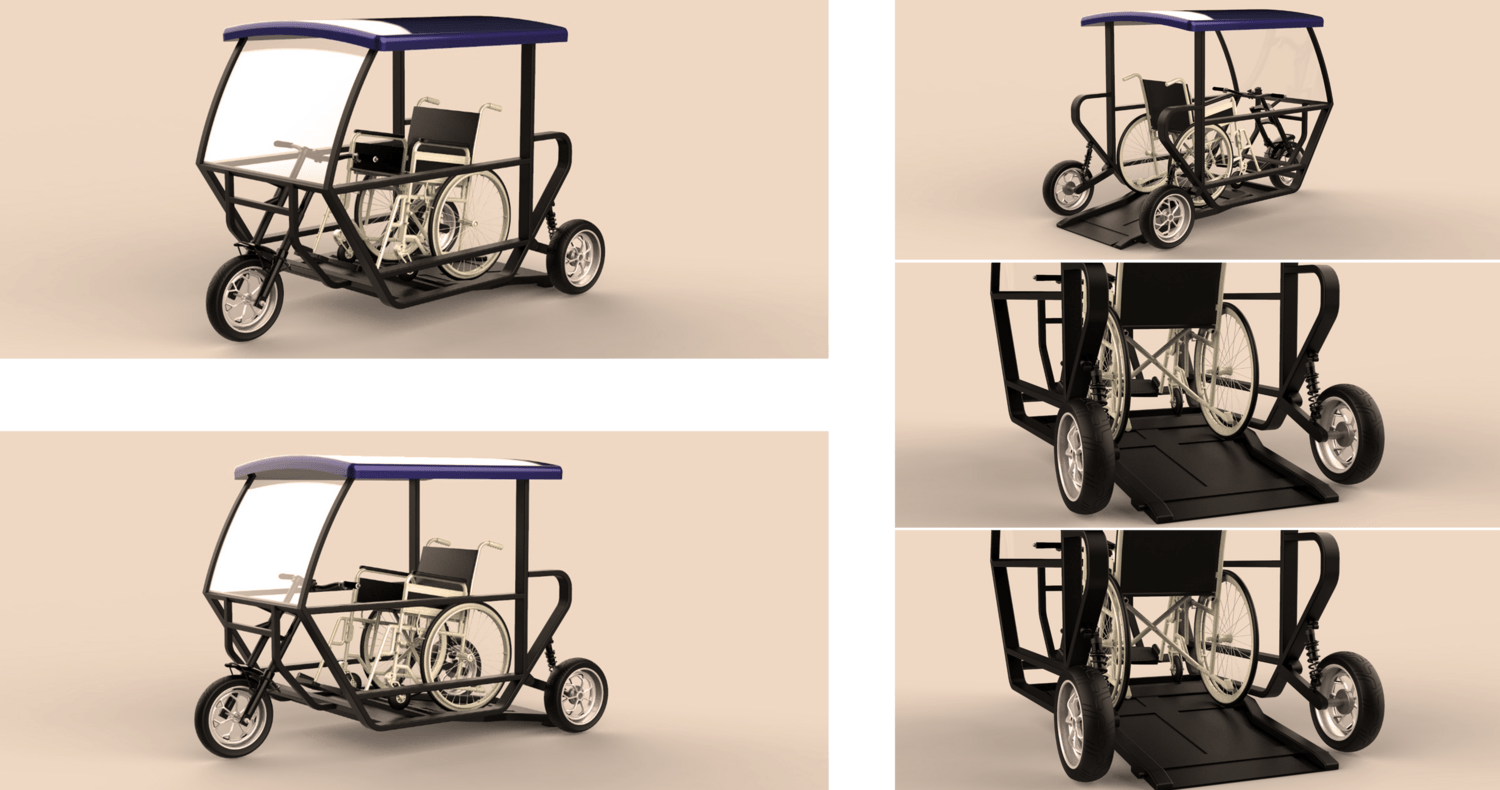Initial Research
The first research was to understand the bases of the organization I was working at, the National Innovation Foundation(NIF). It is a grassroots organization that helps India create more sustainable technologies while removing the socio-economic and rural-urban divide by promoting grassroots innovators. They regularly promote innovations from the local communities, individuals, and informal sector innovators to find their market to innovate.
Basic Research
The first step was to understand the problems faced by the people who have to rely on wheelchairs as their primary mode of transport and understand their point of view on everyday problems. The idea here was to generate empathy for the people of the disabled community. The basic data generated was from interviews of various people using a wheelchair as a day-to-day mode of commute and the problems faced by them.

Existing Products
To understand the present problems, I took the help of a local innovator. He showed me how he personally overcame the mobility challenge. The product created was an auto geared two-wheel wheeled vehicle created into a three-wheeled vehicle with a platform for the wheelchair to park in.
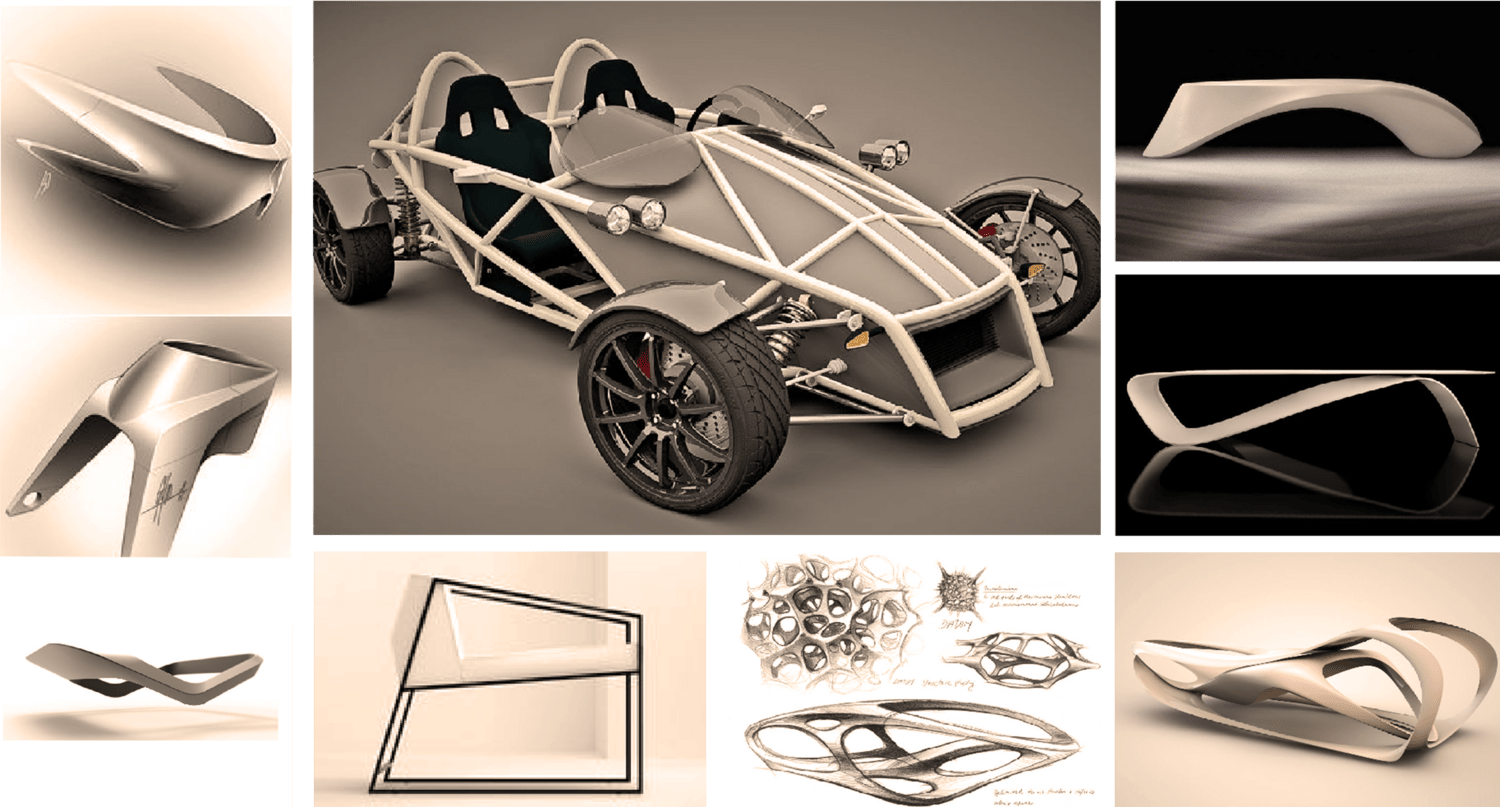
Problem Statement
To improve wheelchair user’s mobility experience which undermines Safety, Ergonomics, Aesthetics.
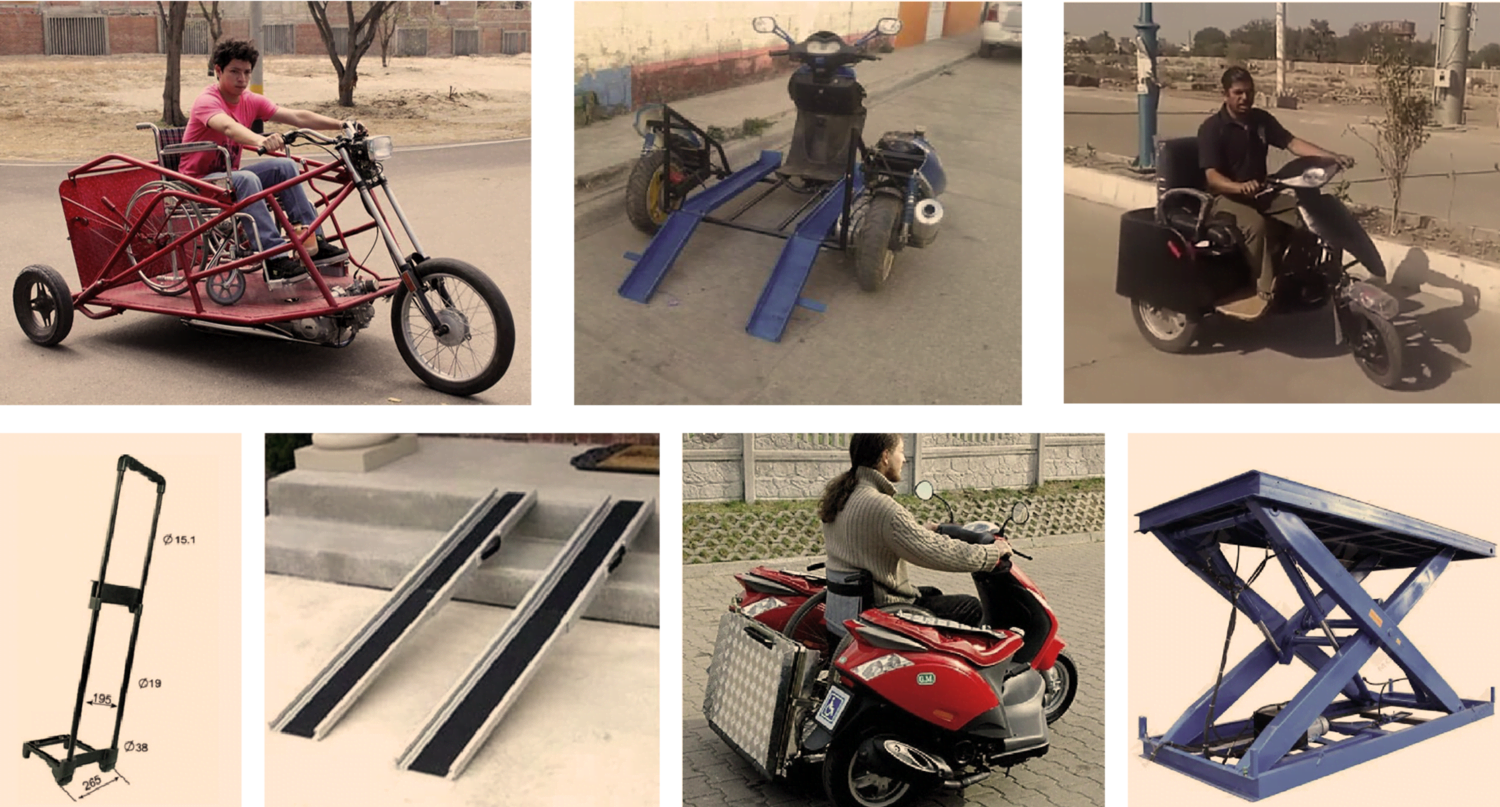
Ideation
I took a step by step approach to understand the level of problems faced. The initial problem that we understood in the research phase was the problem with stairs and or steps. They seem to be no problem or are invisible obstacles for the common person. They are an impossible challenge for people in a wheelchair.
The idea was to understand various lifting mechanisms and understand the one that is the most comfortable and reliable for the large population using the wheelchair.
The initial sketches were deciphering the problems of safety, convenience and functionality of the additional vehicle. To understand the problem better we listed down the problems faced and possible solutions and the availability of those solutions.
Prototype Sketches
In the initial prototype sketches, we tried understanding the form factor to be chosen, and we took a review from various user groups to understand the depth of our understanding. There were more ideas that we understood from them and there were furthermore sketches.
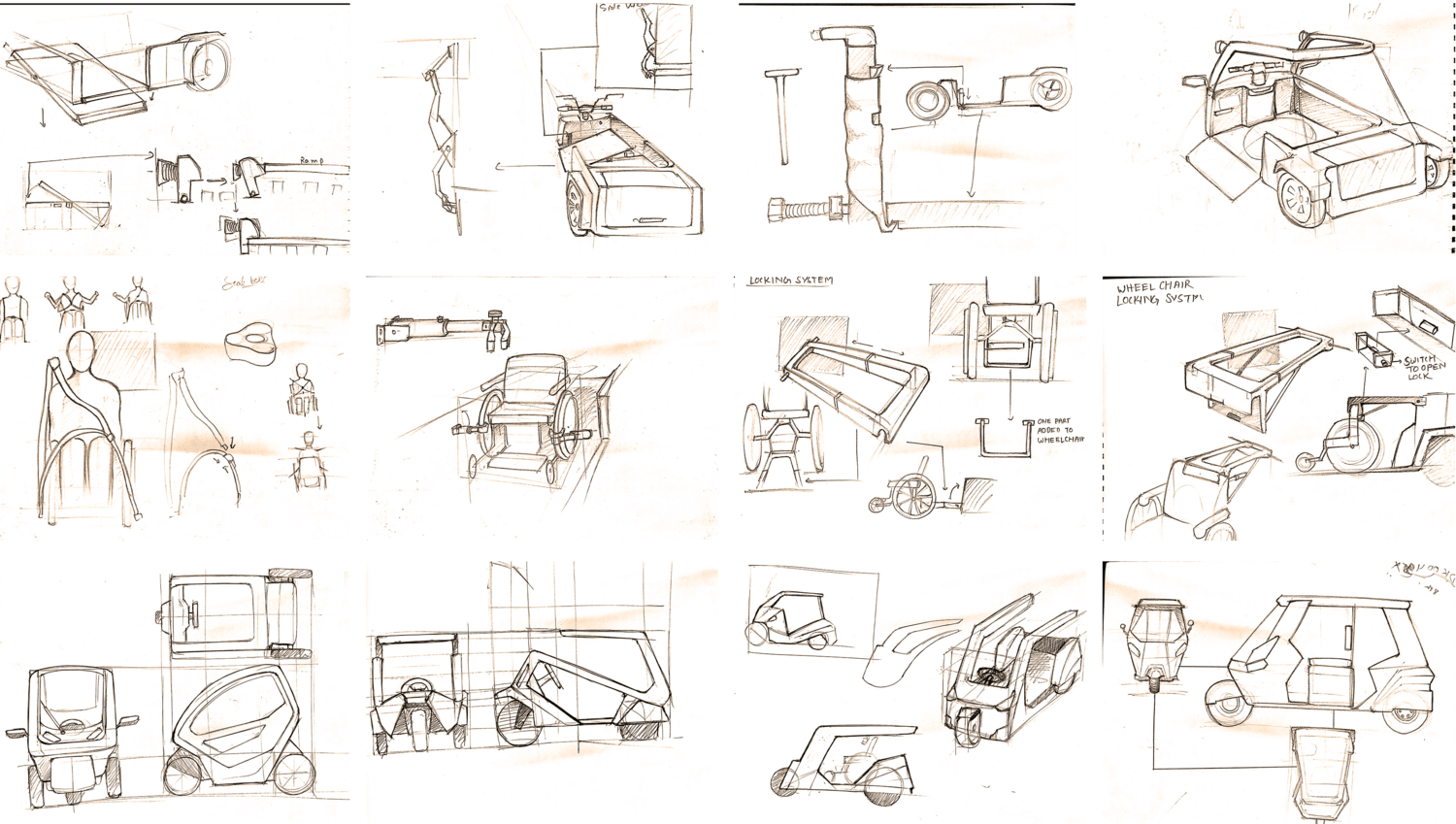
Final Rendering
The final rendered model was created using the following touchpoints from our research, interviews, mood board, ideation, and market availability of products. The frame and the body were created using the idea of minimalism.
We also took the vehicle guidelines provided by ARAI. This helped us in the selection of parts such as the windshield, wheels, shock absorbers, and battery.
The choice of material for the frame was steel, the windshield is laminated glass, the plank is sheet metal of steel and the wheel hub is aluminum alloy. The vehicle uses a lithium polymer battery, which provides a range of 30 kilometers per charge and a top speed of 45 km/ph.
Scale Prototypes
The scale models of these finalized were converted using paper, thermocol and straw-based models. The initial idea was to understand the shape of the proposed vehicle. We tried various methods to match the shapes of the sketch with the use of various materials.
The wireframe models helped us understand the possible no. of joints, type of chassis and possible no of additional parts. This led us to create the cardboard models, these models were created using the wireframe as a point of reference. These models provided us with an in-depth understanding of the possible complications and the possible structural problems faced.
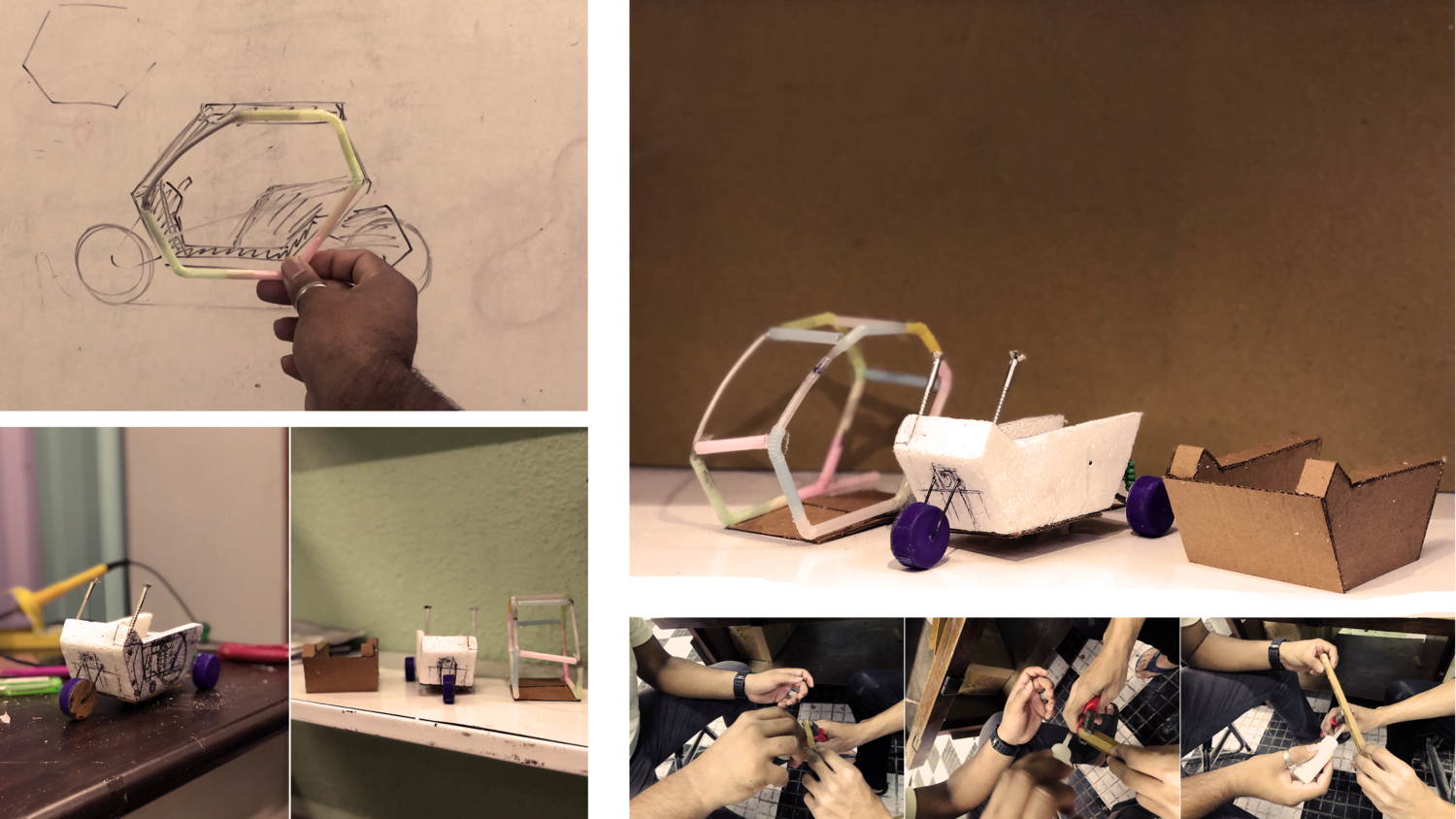
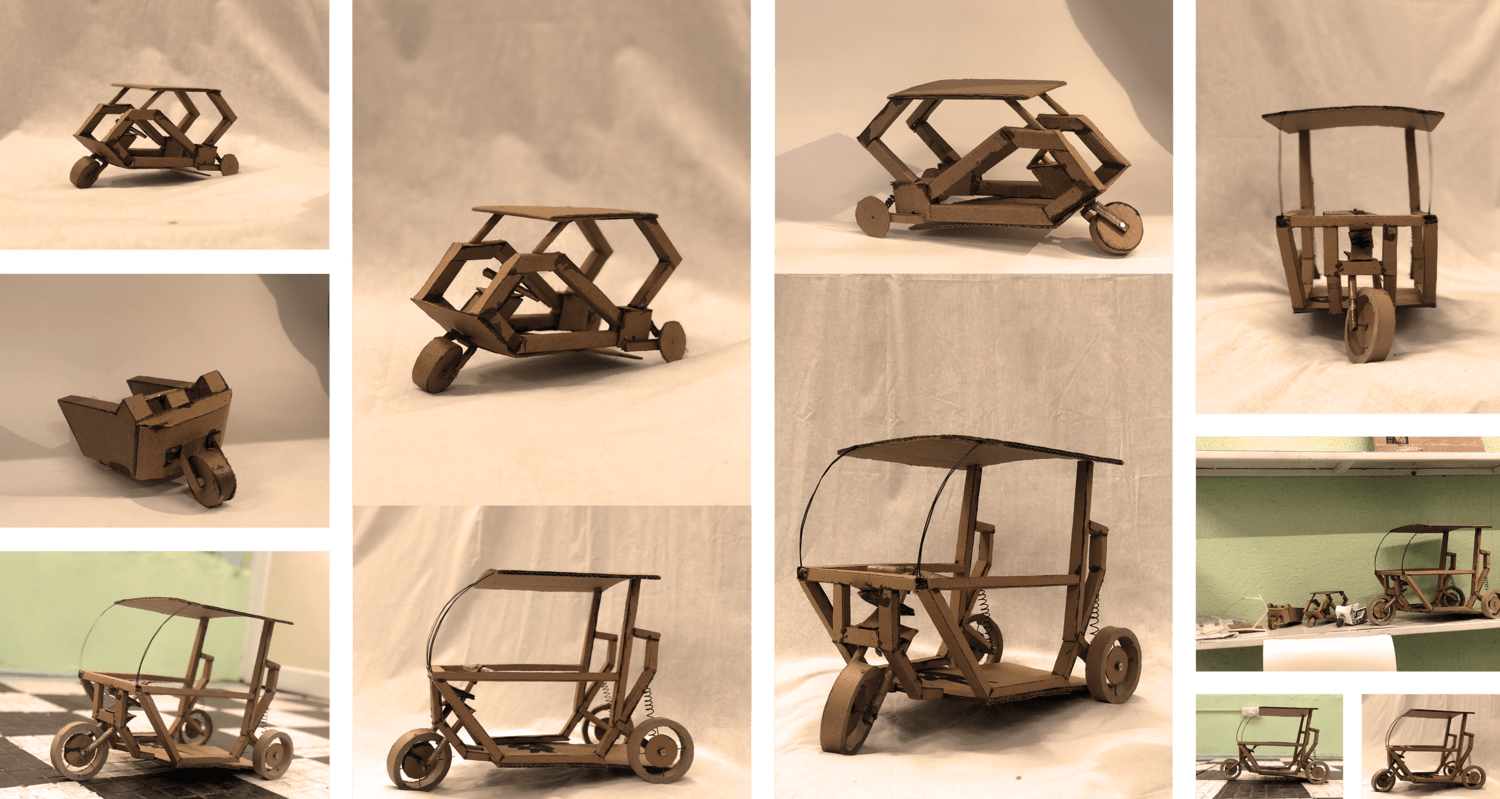
Key Takeaways
A deeper understanding of the problems faced by people with disabilities, understanding it forms a point of empathy and deeper knowledge of vehicular construction and limitations.
